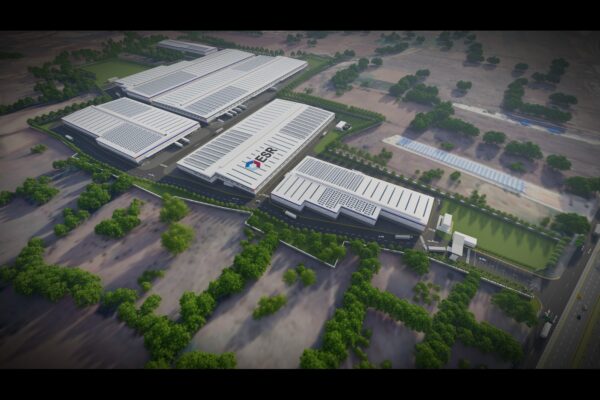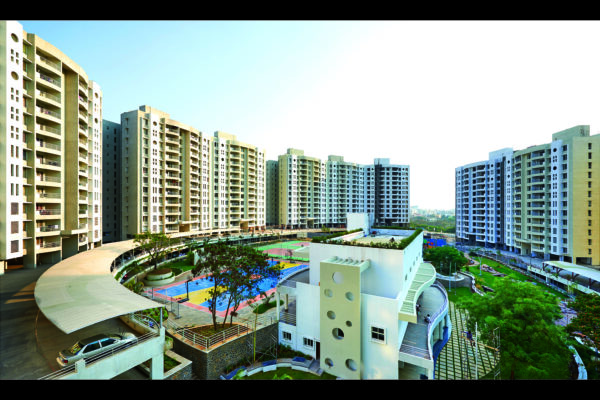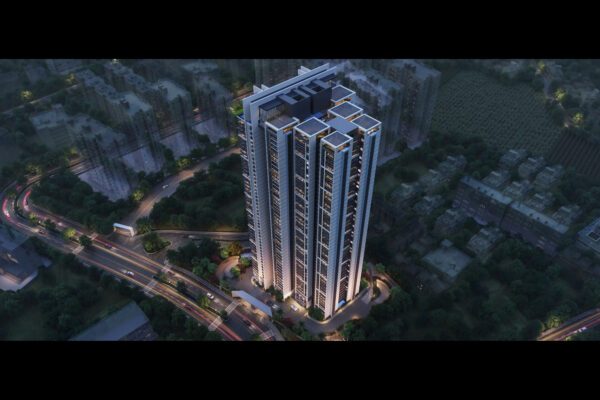Commercial realty: Adapting to evolving workplace dynamics
India's office market is set for robust growth, driven by the expansion of Global Capability Centres and strong contributions from flex operators, financial services, manufacturing, and tech outsourcing sectors. With the country aiming for a larger share of global manufacturing, the office market is well-positioned to capitalize on the opportunities and scale new heights…
Commercial real estate is experiencing a significant shift, with growing demand and increasing investment driving the market forward. According to a report “Leading the Charge: Crafting the Skylines of Tomorrow” released jointly by Confederation Indian Industries (CII) and CBRE, equity investments in Indian real estate may rise 49 percent to USD 11 billion this calendar year amid strong demand for properties. The report further states investment activity in India’s real estate market scaled a new peak in the first nine months of 2024 due to resurgence in capital deployment in the July to September quarter. Equity capital inflows touched USD 8.9 billion between January and September, registering a 46% Y-o-Y growth. The average deal size also increased to nearly USD 45 million in the first nine months of 2024 from about USD 36 million in 2023. Mid-sized deals, ranging between USD 10-50 million, represented 56 percent of the total investment inflows during this period. In 2023, the equity investments in real estate stood at $7.4 billion. Debt financing also hit a record high, exceeding $4.7 billion from January to September 2024, registering more than twofold increase YoY. The report points out, Gateway cities such as Delhi-NCR, Mumbai, and Bengaluru remained the preferred markets with a cumulative share of over 63 percent in investment inflows in January-September 2024; Delhi-NCR witnessed the highest share of ~26% in capital inflows (amounting to ~USD 2.3 billion). Equity capital inflows into tier-II and III cities also reached nearly USD 0.6 billion, with Ludhiana, Mohali, Tuticorin, Hubli, Coimbatore, and Indore collectively accounting for ~76 percent of these inflows. Domestic investors (predominantly developers) invested nearly USD 6 billion during the first nine months of the year, dominating the overall capital inflows with an almost 65% share. In comparison, foreign investors contributed about USD 3.1 billion during the same timeframe. Notably, North American and Singaporean investors were the significant contributors, representing approximately 85 percent of all foreign capital inflows.
Upward momentum in office space demand continues
According to CBRE, the office sector witnessed a resurgence of inflows during January-September 2024, with a nearly 50 percent YoY growth. Land / development sites and the office sector cumulatively attracted more than 70 percent of the investment flows during this period. According to a report by Colliers, strong leasing activity in the first three quarters of 2024 has pushed Grade A office space demand to 46.7 million sq ft across the top six cities of the country. Building on the momentum in first half of the year, Q3 2024 saw space take-up to the tune of 17.3 million sq ft, a 31 percent YoY growth. Bengaluru and Hyderabad accounted for over half of the leasing activity during this period. Bengaluru registered its highest ever leasing in any quarter at 6.3 million sq ft, continuing its dominance in the office market. "Office space demand in Bengaluru, Hyderabad and Mumbai have reached close to or surpassed 2023 demand levels in the first three quarters of 2024. Occupier confidence is reflected in continued higher uptake of large-sized deals of more than 1 lakh sq ft, accounting for 65 percent of total leasing in Q3 2024. Bengaluru saw 81 percent of its leasing through large-sized deals, while Pune followed closely with 71 percent, driven by the Tech and BFSI sectors," says Arpit Mehrotra, Managing Director, Office services, India, Colliers. The report further states, technology sector drove around one-fourth of the overall office space demand during the quarter, followed by BFSI occupiers and Flex space operators. Interestingly, Bengaluru and Pune surpassed Mumbai in BFSI leasing, and accounted for 39 percent and 25 percent share respectively in overall BFSI leasing during the quarter. Flex spaces too saw significant leasing of 3.4 million sq ft in Q3 2024 and accounted for almost 20 percent share in overall leasing.
According to a report by JLL India, office space leasing activity continues to show tremendous momentum with the Q3 (July-September 2024) numbers at 19.89 million sq ft, the second highest ever quarterly gross leasing volumes. For the nine-month period January-September 2024, gross leasing volumes now stand at 53.43 million sq ft. "India’s office market has seen flex emerge as a powerhouse occupier segment. Flex operators have claimed an unprecedented 22 percent of Q3 leasing activity, surpassing traditional frontrunners like Tech and BFSI. With a record-breaking 4.38 million sq. ft leased in Q3 alone, and 10.23 million sq. ft in the first nine months of 2024, the flex segment is on track to shatter its previous annual record set at 10.4 million sq. ft in the year 2019," says Dr Samantak Das, Chief Economist and Head of Research and REIS, India, JLL.
According to a report by Knight Frank India, office transaction volumes have grown by 18% YoY and scaled a record high of 1.77 mn sq m (19 mn sq ft) in Q3 2024. In YTD terms, transaction volumes are 27% higher than the comparable period in 2023 and the market is firmly on course to breach a fresh annual high in 2024. The report further mentions the Bengaluru office market saw the maximum growth in transaction volumes in Q3 2024 at 158%YoY and was by far the largest contributor to the overall tally. The momentum in this market has built up steadily over the past four quarters to a near record high of 0.5 mn sq m (5.3 mn sq ft) during this period. NCR and Chennai grew at 26% and 35% YoY respectively in Q3 2024, being the other prominent markets which saw significant growth. 1.07 mn sq m (11.5 mn sq ft) of office space attained completion during Q3 2024. Hyderabad, with 0.4 mn sq m (4.2 mn sq ft), accounted for 39% of the office space delivered during the quarter. Bengaluru and Pune were the only other markets that saw significant deliveries during the quarter at 0.2 mn sq m (2.5 mn sq ft) and 0.3 mn sq m (2.7 mn sq ft) respectively. The overall vacancy levels have dropped significantly to 14.9% in Q3 2024 compared to 16.4% previously (Q3 2023) as development activity has lagged transactions consistently since the beginning of 2023.
Flex space, which gained prominence during the pandemic, has emerged as a transformative solution in the commercial real estate sector. With businesses embracing hybrid work models and prioritizing cost-efficiency, the demand for flexible office spaces has soared. These spaces provide scalability, reduced capital expenditure, and adaptability to fluctuating workforce needs, making them an attractive option for startups, SMEs, and even large enterprises. Moreover, the rise of remote work has driven the need for satellite offices closer to employees' homes, further boosting the flex space market. This trend is reshaping urban office landscapes. According to Knight Frank India, in Q3 2024. Rental levels in the larger office markets of NCR, Mumbai and Pune grew by 3% YoY, while Bengaluru and Chennai rents grew by 7% and 10% YoY respectively. According to a report by Colliers, about 45% and 35% of mid and large sized companies respectively are carrying out their core business operations in flex spaces. Notably, with increasing technology adeptness in flex spaces, about 40% of the technology sector occupiers are using flex spaces for core business operations.
GCC takes centre stage
According to JLL India, Global Capability Centres (GCCs) now occupy more than 240 million sq. ft of Grade A office space across the country's top seven cities (Mumbai, Delhi NCR, Kolkata, Bengaluru, Chennai. Bengaluru and Pune). Bengaluru leads the pack, accounting for approximately 42% of the total space occupied by GCCs. According to a report by Knight Frank India, the absorption or office space taken up by GCCs at a pan India level is estimated to reach around 26 mn sq ft by the year 2027 which itself will be a ground-breaking figure for the GCC market in India, as the global economy is in turmoil with tight monetary policies. India has a good support system with political stability, a healthy consumption based economy and a diligent regulatory system for the financial sector. One of the major drivers of the GCCs to reach an absorption of 26 mn sq ft is software exports which remains an important part of India's service exports with offshoring services seeing continued growth. Other important drivers for growth include a skilled workforce especially in the technology sector, expansion into Tier 2 cities as satellite centres, favourable government policies and improved infrastructure. Overall, a positive momentum in growth for GCCs in India is expected with all the economic, demographic and social factors favouring India.
Uptick in industrial & warehousing demand
India's industrial and logistics sector has witnessed substantial growth in recent years, driven by its critical role in supporting industries such as manufacturing, agriculture, and e-commerce. This growth is essential for the nation to achieve its ambitious economic targets, including a projected GDP of USD 5.5 trillion by 2027. While the sector faces numerous challenges, it also presents significant opportunities to enhance efficiency, drive innovation, and strengthen India's economic foundation. According to a report, "Unravelling the trends shaping India's real estate market in 2024” by CBRE Research, pan-India industrial and logistics (I&L) leasing activity reached 27.5 million sq ft. in the first nine months of 2024, witnessing a moderation on an annualised basis. Delhi-NCR, Kolkata, and Bengaluru dominated the absorption, cumulatively accounting for almost 61 percent of the total space take-up. In terms of tenant sectors, third-party logistics (3PL) players dominated the leasing activity with a share of about 39 percent, as occupiers continued to outsource their storage and delivery capabilities to minimise lead times and optimise costs. This was followed by engineering & manufacturing (E&M) and retail firms, which together accounted for about 30 percent of the total space take-up.
According to a report by Knight Frank India “India Warehousing Market Report – Q3 2024” warehouse transactions across eight key Indian markets reached 14.65 mn sq ft in Q3 2024 (July–September). Notably, 41 percent of these transactions involved Grade A spaces. The manufacturing sector outperformed the 3PL sector in leasing volume, marking a significant shift, as 3PL has traditionally dominated the Indian warehousing market. Manufacturing industries accounted for 37 percent of total transactions, leasing 14 mn sq ft from January–September 2024. Pune emerged as the most expensive warehousing rental market among the eight cities analysed in the country, with an average rent of Rs. 26.9/sq ft/month. Kolkata, Chennai, and Mumbai followed at Rs. 23.9/sq ft/month each. Healthy rental growth across markets has been driven by limited supply in recent times. Pune also led in value appreciation, recording nearly 4 percent YoY rental growth in Q3 2024, while Ahmedabad ranked second with a YoY growth of 3.50 percent during the same period. According to a report by Vestain, industrial & warehousing sector recorded a single deal valued at USD 95 mn, with its share declining to 10% in Q3 2024 from 28% in the same quarter of the previous year. In value terms, investments during the third quarter of 2024 reduced by 50% on year and 94% on quarter. Government is targeting to reduce logistics cost to 5-6% of the GDP the current 8-9% currently, which may boost industrial and warehousing sector, further attracting investments.
Reshaping skylines
India's commercial real estate sector is undergoing a dynamic transformation driven by robust investment activity, increasing demand across office, industrial, and logistics spaces, and the rise of flex and Grade A facilities. Key trends such as the growing prominence of flex spaces, the expansion of Global Capability Centres (GCCs), and the significant uptake in warehousing and industrial demand underline the sector's resilience and adaptability. Additionally, the substantial equity and debt inflows highlight investor confidence in the market's long-term potential, supported by government initiatives and favorable economic conditions. The sector's continued growth is a testament to India's evolving real estate landscape, which is not only meeting domestic requirements but also positioning itself as a global leader in innovation and infrastructure. As the market continues to diversify and mature, it is poised to play a pivotal role in shaping the country's economic trajectory, reaffirming its status as a cornerstone of India's urban and industrial development.
















